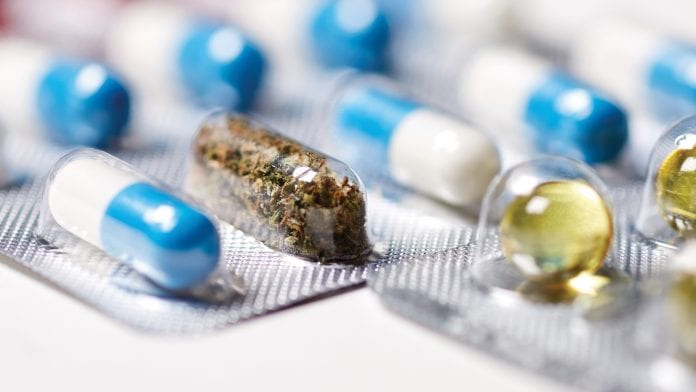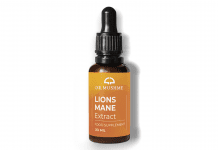
As legalisation of medical cannabis and cannabis-derived products expands globally, Sigma Analytical Services is establishing itself as a pioneer.
Understanding the complex chemistry of cannabis and its potential for medical and therapeutic purposes is one of the many services Sigma provides, along with being the thought leader in medical cannabis chemistry, research, and analytical testing in Canada, and exploring new opportunities worldwide.
The recent wave of cannabis legalisation for medical and recreational purposes in several countries and American states has created many exciting new opportunities to fully discover the potential benefits of this ancient plant for medical purposes. Separating scientific fact from popular myth and correlating the therapeutic effects of cannabis to its chemical ingredients requires large-scale collaborations in controlled environments between legal cannabis analytical laboratories, universities, research institutes, and pharmaceutical companies.
Sigma Analytical Services, headquartered in Canada – where cannabis has been federally legalised for recreational and medical purposes since October 2018 – is emerging as a leader in the advancement of the understanding of cannabis chemistry, and is establishing a global scientific network of pioneers to facilitate research and knowledge sharing in this new and promising scientific field.
Historical perspective of medical cannabis
Cannabis (Cannabis sativa L. from the family of Cannabaceae) is a widespread plant with origins tracing back to the ancient world. Evidence suggests that cannabis and its close relative, hemp, have a long history of medicinal and practical use in the Middle East and Asia dating back to antiquity. Hemp – from the same family as cannabis but containing less than 0.3% Δ9-tetrahydrocannabinol (THC, the psychoactive ingredient in cannabis) – was one of the first plants to be used as fibre around 10,000 years ago.
Historical records suggest that the medical use of cannabis began as early as 2700 BC with the Emperor Shen Neng of China, who was prescribed marijuana tea to treat several illnesses including rheumatism, malaria, gout, and poor memory. Cannabis was also used medicinally, recreationally, and spiritually in other parts of Asia, including Japan and India.
Hemp was introduced to Western Asia, Egypt, and Europe between 1000 and 2000 BC and was cultivated in many parts of Europe after 500 AD for industrial purposes.
In 1545, the Spanish brought hemp to South America (Chile), where it was cultivated mostly by slave labour and was refined into a variety of commercial products such as paper, textiles, and clothing. Around 1606, hemp was introduced to North America, and in the late 1700s some American medical journals started referring to the potential benefits of hemp to treat various health problems, including skin inflammation and incontinence.
Cannabis was introduced to Western Europe as medicine in the early 19th Century to treat epilepsy, tetanus, rheumatism, migraine, asthma, trigeminal neuralgia, chronic fatigue, and insomnia.
In the US, cannabis was listed for the first time in the United States Pharmacopoeia in 1850, and was consumed as a medicine into the early 20th Century. Then the passage of the Marihuana Tax Act in 1937 restricted the use and sale of cannabis in the US, and cannabis was subsequently dropped from the United States Pharmacopoeia in 1942. More legal restrictions and penalties were introduced with the enactment of the Boggs and Narcotic Control Acts of 1951 and 1956, respectively. The passage of the Controlled Substances Act in 1970 further prohibited cannabis under US federal law, listing the plant as a Schedule I Controlled Substance.
In Canada, prohibition started when cannabis was added to the Confidential Restricted List in 1923 under the Narcotics Drug Act Amendment Bill. In addition to criminalisation, these legislative actions contributed to creating limitations on research by restricting procurement of cannabis for academic purposes, and resulted in a public stigma which has continued to this day.
Evolving global landscape
The legal landscape for medical cannabis has changed dramatically over the past decade. To date, 42 countries have legalised or decriminalised the medical use of cannabis and/or cannabis-derived pharmaceuticals, and more countries are on their way to legalising it.
Medical cannabis is already legal (or in the process of becoming legal) in roughly ten European countries, with Greece being the latest to legalise it. There are plans to legalise medical cannabis in several other European countries by 2022, and Europe is trying to bridge the gap in knowledge and information sharing across its various governments, research and developments institutes, industry bodies, and the European healthcare sector.
The legalisation of recreational cannabis in some countries (Canada, Uruguay, and some US states, with several other countries pending) also means more government funding and private investment for cannabis research. Public safety concerns about the consumption of cannabis and cannabis-derived products (oils, extracts, edibles, topicals, pharmaceuticals, etc.) demand complex and accurate tests to ensure that the level of potency, pesticides, heavy metals, residual solvents, aflatoxins, etc. are appropriately measured and controlled.
Such tests require sophisticated instrumentation, validated methods, and clear guidelines and standards. The complex chemistry of cannabis — with more than 500 known molecules, including cannabinoids, terpenes, etc. — makes these types of analysis quite complicated.
Meanwhile, more research is starting to show the effectiveness of cannabis-derived drugs in the treatment of epilepsy, post-traumatic stress disorder (PTSD), neurological problems, chemotherapy-induced nausea and vomiting, anorexia, arthritis, migraine, glaucoma, and chronic pain. In fact, the first cannabis-based drug (EPIDIOLEX®, from GW Pharmaceuticals) was approved in 2018 by the US FDA for the treatment of severe, childhood-onset epilepsy syndromes in people aged two and older, including: Dravet syndrome, infantile spasms (IS), Lennox-Gastaut syndrome, and tuberous sclerosis complex (TSC).
These promising developments open the door to more investment, government funding, research, and – inevitably – the legalisation of medical cannabis and cannabis-derived pharmaceuticals in other jurisdictions.
Legalisation impact on R&D funding in the US, Canada, and Europe
Cannabis is listed as a Schedule 1 Controlled Substance in the US and therefore conducting research and raising funds for cannabis-related projects is extremely challenging for US-based companies and researchers.
While the wave of legalisation of cannabis in some US states has helped entrepreneurs and investors to enter the market, the fact that cannabis is still federally illegal prevents universities and national science institutes (such as the National Institute of Health) from conducting large-scale studies on its medical and therapeutic effects.
The situation in Europe is only slightly better. Cannabis is still considered a controlled substance and many EU Member States treat possession of cannabis as an offence. This situation is starting to improve with the recent legalisation of medical cannabis in Germany, Portugal and other European countries.
Federal legalisation of cannabis in Canada occurred in October 2018, making Canada only the second country in the world to allow widespread recreational and therapeutic use of the plant and its derivatives. This is creating a unique opportunity for Canadian companies and institutes, allowing them to operate in a completely legal environment, free of prohibition-related challenges regarding financial transactions, transportation, government research funding, and the publication of resultant findings. This is already leading to a surge in R&D and cannabis-based business activities in Canada.
It is conceivable that the legalisation in Canada will become a referenceable framework and a model for other countries where cannabis legalisation is supported by the public, but a workable legal framework has not yet been established. In this regard, Canadian individuals, companies, government bodies, and institutes at the forefront of the legalisation wave may come to serve as thought leaders and educators in other jurisdictions, sharing the lessons that they will inevitably learn with other countries.
Product diversity from flower to extracts, edibles, and nutraceuticals
Historically, the most common method of use for cannabis has been smoking. When cannabis is smoked, a high-temperature flame converts the THCA (tetrahydrocannabinolic acid) present in the plant to THC. Other cannabinoids, such as CBDA, go through this same process (known as decarboxylation) when exposed to high temperature. Note that THCA and CBDA do not interact with the endocannabinoid receptors of the human body as effectively as THC and CBD, and therefore the use of the cannabis plant without decarboxylation (e.g. by ingestion) does not have the same effects as smoking.
More recently, chemical extraction techniques have been developed to isolate the cannabinoids, terpenes, and other chemicals from the plant, creating highly concentrated resins and oils which can be used to produce various edibles (gummy bears, chocolates, etc.), vaporisation cartridges, topical creams, and softgel capsules with controlled dosages.
The major advantage of these products is that they do not require smoking, which inevitably results in carbon-based contaminants entering the lungs. However, these new types of products introduce several new challenges:
- Dosage (potency) control: It is critical that the concentration and amount of cannabinoids such as THC and CBD are precisely controlled in these products to avoid unintended consequences
- Degree of decarboxylation: THCA and CBDA must be converted to THC and CBD to be effective; therefore, the degree of decarboxylation must be closely monitored during the extraction process
- Concentration of pesticide, solvent residues, heavy metals, and other chemical contaminants: If the original material (usually cannabis flower) contains high levels of pesticides or other chemical contaminants, these chemicals may become concentrated in the extracts, resulting in dangerous levels of chemical contaminants. In addition, if organic solvents are used for extraction, it becomes imperative to monitor the levels of residual solvents and ensure that they are not at harmful levels. Current guidelines in Canada, for example, suggest the extension of the US and EU Pharmacopeia standards for chemical contaminants in cannabis-based extracts
- Concentration of terpenes: Terpenes are the organic molecules produced by a variety of plants including cannabis that give the various strains their unique and often strong scent. Some studies suggest that the presence of certain terpenes, particularly in combination with certain cannabinoids, enhances the therapeutic effects of cannabis-based products. It is also possible that very high levels of some terpenes (for example, as a result of the extraction process) may be harmful to human beings. Although more scientific evidence in this area is required, early studies suggest that it would be both prudent and advantageous to monitor the levels and types of terpenes in cannabis-based products.
Critical cannabis tests required for product safety and efficacy
Comprehensive laboratory analyses can do a lot more than simply achieving regulatory compliance. Analytical testing ensures the safety of the products but can also deliver unparalleled quality and consistency by quantifying and qualifying the unique properties of proprietary strains and providing a solid basis for research and product development.
Chemical analysis of cannabis and cannabis-based samples is particularly challenging because of:
- The complex chemistry of cannabis with more than 500 molecules, including more than 100 cannabinoids that could potentially interfere with each other during analysis
- Diversity of sample types, especially edibles where the matrix could have very high levels of sugars, fatty acids, pigments, etc. and these compounds would further complicate the analysis of cannabinoids, terpenes, residual solvents, etc.
Therefore, developing validated methods from sample preparation to analysis, data processing, and interpretation is a challenging task and requires in-depth understanding of cannabis chemistry.
Cannabinoid and potency profiling
Cannabinoid profiling and potency testing are essential for the development of cannabis products. Small variations in potency and cannabinoid content can dramatically alter both the recreational and therapeutic effects of different strains. Sigma Analytical Services uses advanced GC-MS, HPLC, and LC-MS/MS technologies together with a set of validated methods to provide detailed identification and quantitation of known cannabinoids (including THC, CBD, and CBN) from even the most difficult samples, including fresh and dried cannabis flowers, oils, extracts, edibles, and concentrates.
More than 100 cannabinoids have been isolated from the cannabis plant and, for the most part, the therapeutic effects of these cannabinoids are not yet fully understood. The prevailing hypothesis is that different cannabinoids interact with the endocannabinoid system in human beings simultaneously in what is known as the entourage effect. This makes isolation of active pharmaceutical ingredients (APIs) from the cannabis plant quite challenging, but research in this area is currently underway in progressive universities and institutes in Canada, Israel, and Australia.
Terpene profiling
As mentioned earlier, terpenes are the primary aromatic compounds and essential oils that give different strains of cannabis their varying scents, flavours, and colours. As with the terpenes in wine or beer, these attributes attract consumers to particularly palatable and unique products.
Beside their medical effects, terpenes are also responsible for improving the entourage effect in which terpenes work together to assist cannabinoids in passing into the bloodstream. That way terpenes enhance their own medicinal properties, as well as those coming from cannabinoids.
Sigma Analytical Services profiles these compounds alongside their cannabinoid potency to create a chemical fingerprint for each strain. A proprietary combination of GC-MS and LC-MS/MS analytical methods is used to provide a complete profile of up to 40 known terpenes in cannabis and hemp samples.
Pesticide detection
Harmful pesticides can accrue in cannabis samples, both as a residue of legitimate cultivation aids and due to contamination from products used on nearby crops or on crops sharing transportation and storage space. Different jurisdictions have come up with their own list and levels of pesticides. For example, 95 pesticides are regulated by Health Canada, which could be identified and quantified using LC-MS/MS technology and a validated method developed to deliver down to single part per billion (ppb) detection for all pesticides.
Heavy metals analysis
Cannabis plants have been shown to accumulate and concentrate heavy metals absorbed from even lightly contaminated soil, water, air, and fertiliser. To provide regulatory compliance, Sigma Analytical Services uses the most advanced ICP-MS platform to achieve part per trillion detection of arsenic, cadmium, lead, and total mercury levels in cannabis, hemp, and derived products samples. A full spectrum of ultra-trace elemental analyses for advanced micronutrient profiling and product development can also be carried out.
Residual solvents testing
Cannabis and hemp concentrates are often extracted for use in oils, edibles and pharmaceutical drugs using organic solvents that can negatively impact product quality, potency, and consumer health. Using a validated SOP together with state-of-the-art headspace GC-MS instrumentation, even minute traces of residual solvent can be detected and measured.
Aflatoxin detection
Cannabis and hemp plants are susceptible to fungal growth during cultivation, processing, and storage. Some fungi can in turn propagate secondary toxic metabolites, or mycotoxins, which are dangerous to immunologically vulnerable people, such as the elderly and the ill.
Sigma Analytical Services has developed a validated LC-MS/MS experimental method for the detection of Aspergillus aflatoxins — a subset of particularly toxic B1, B2, G1, and G2 mycotoxins which have been directly linked to serious health issues such as liver cancer.
Microbiological analyses
As with all agricultural products, cannabis and hemp crops are subject to a variety of biological maladies. To ensure consumer safety and product purity, a full-range of microbial analyses is required, including tests for E. coli and coliforms, salmonella, total yeast and mould, and aerobic bacteria.
Leading the way in cannabis and hemp testing, and R&D
Sigma Analytical Services is a complete solution provider for all types of cannabis and hemp testing and research. Equipped with the most advanced analytical instruments and validated SOPs, Sigma possesses a tremendous amount of acquired knowhow in the areas of cannabis and hemp sample preparation, processing, digestion, method development, and analysis, gained through years of close collaboration with testing labs, universities, and government entities across North and South America (Oregon, California, Michigan, Colombia, Canada, and more).
Leveraging decades of experience in food safety, pharmaceutical development, and environmental analysis uniquely positions Sigma to address the analytical and R&D needs of the global cannabis and hemp market as it evolves, and ensures unmatched speed and efficiency in delivering reliable and accurate results.
This established scientific network and technical knowhow and experience allow Sigma Analytical Services the breadth and depth to undertake large-scale studies and research in this space. One of our primary goals is to separate cannabis myth from fact and help the medical community truly understand the interactions of the active cannabinoids in the human body. A working relationship with several universities in Canada and the pharmaceutical industry is being developed to open new horizons in this field of research.
Leveraging these strategic partnerships with labs, cultivators, university researchers, pharmaceutical companies, and testing instrument manufacturers, Sigma also provides in-house and contract R&D in cannabis and hemp and consulting services in extraction, formulation, and product development.
Sigma Analytical Services offers
- Complete analytical testing of cannabis and hemp-derived products
- Extraction, formulation, and cannabis and hemp-derived product development and contract R&D services from seed to final product
- Consulting services regarding cannabis legalisation for government entities and regulatory bodies
- Consultation and technical training for establishing and operation of cannabis and derived products QA/QC and R&D labs.
Kaveh Kahen, PhD
President and CEO
Ashton A Abrahams, MBA
Chairman and COO
Sigma Analytical Services Inc.
+1 888 406 0016
info@sigmaanalytical.com
https://sigmaanalytical.com/
Please note, this article will appear in issue 8 of Health Europa Quarterly, which is available to read now.


















